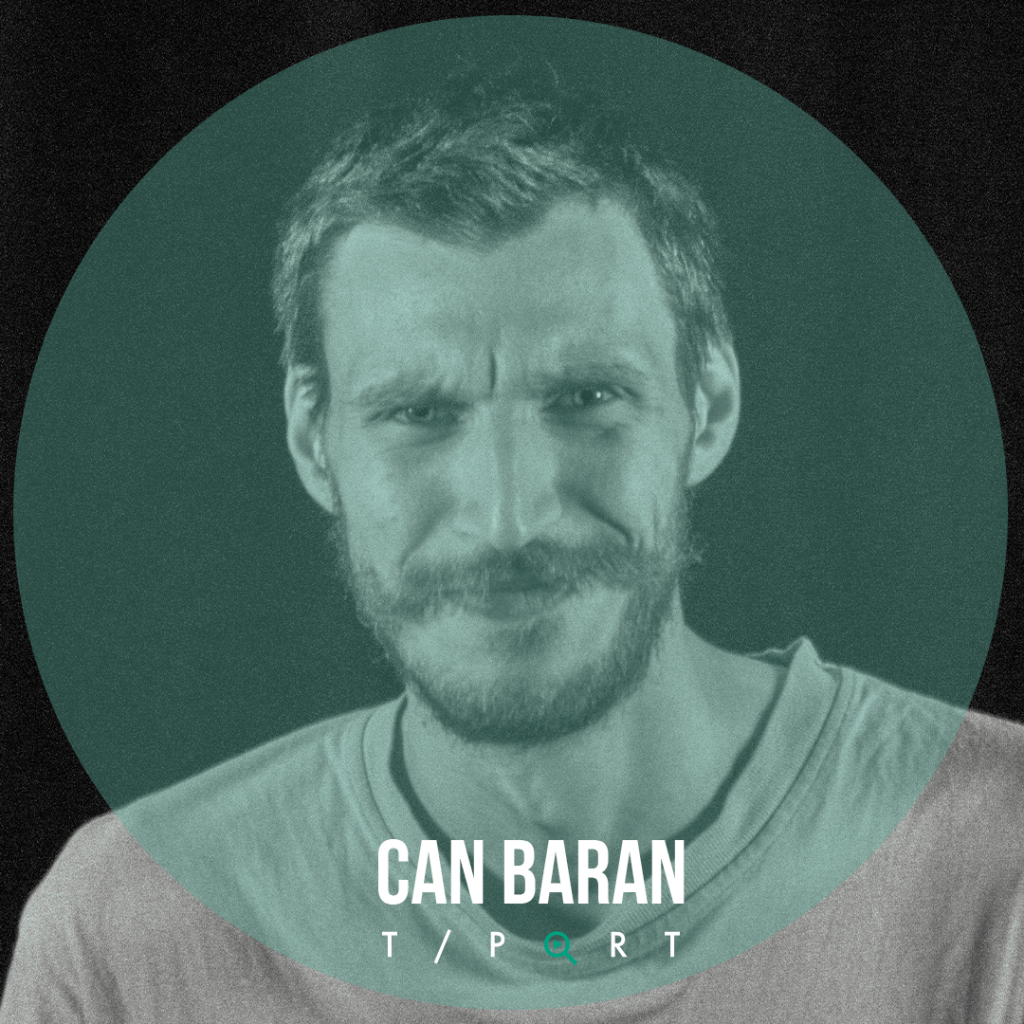
Filmmaker Can Baran has just graduated from Turkey’s Bilkent University school of Communications and Design and his graduation film TENEMENT has made it to the National Student Films final at the Adana Golden Boll International Film Festival.
In this interview we caught up with Can to find out more about his late-night inspiration sessions, what it was to shoot a micro-budget film, and why he doesn’t believe extra resources make for better films…
Hi Can! Could you introduce yourself in a few lines?
I was always observant and constantly curious about the world from an early age. Since I was a shy and quiet boy, I’ve always sat around a corner observing the people around me. These early inklings gradually evolved into a deep-seated desire to offer audiences a novel perspective and a unique cinematic experience. That’s when I knew that becoming a film director was not just a choice; it was my sole passion.
To pursue my dream, I enrolled at Bilkent University’s Department of Communication and Design (COMD). I shot my first short film, SOUL TRAIN, in 2021. It was a memorable experience to shoot my first film under the supervision of invaluable academics and with my talented classmates. This experience followed with my second short, called THE FUGUE, in 2022. In this film, I learned how to produce a film besides directing it. Lately, I graduated from COMD this year with TENEMENT. In TENEMENT, my auteuristic style developed with my crew’s creative vision, and our voice in filmmaking can be seen through it.
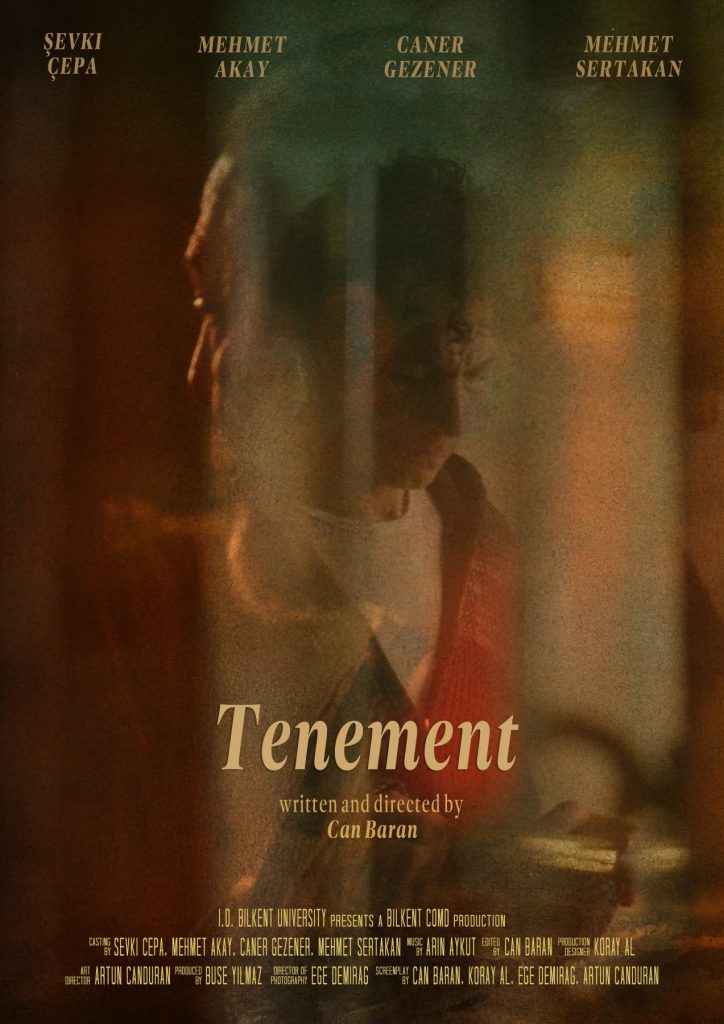
While working on the film, where did you draw your inspiration from?
Inspiration for a film can come from the most unexpected places. For me, stillness of the night is quite fruitful. Something is intriguing about those late hours when most people are asleep, and the world seems to belong to a select few still awake.
Sometimes, when I cannot sleep, I have this peculiar habit. I look for a light in other people’s windows. It’s almost like peering into someone else’s world, wondering why they aren’t asleep and what they might be preoccupied with at that very moment. It’s a curious exercise in imagination, attempting to decipher the stories behind those lit windows.
Moreover, I’ve always been curious about the lives of everyday people, particularly those in the working class. Beyond their roles as employees, I’m fascinated by the rich tapestry of experiences they might be living. Their stories, struggles, and aspirations often go unnoticed, overshadowed by societal expectations and titles.
This film I’ve been working on culminates these two interests. It’s an exploration of those late-night musings and a deep dive into the lives of people seen as ordinary for many who might be carrying untold stories. It’s about peeling back the layers of our urban existence, shedding light on the human connections that often remain hidden beneath the surface. This project is a cinematic tapestry woven from the threads of my late-night contemplations and a fascination with the unseen lives around us.
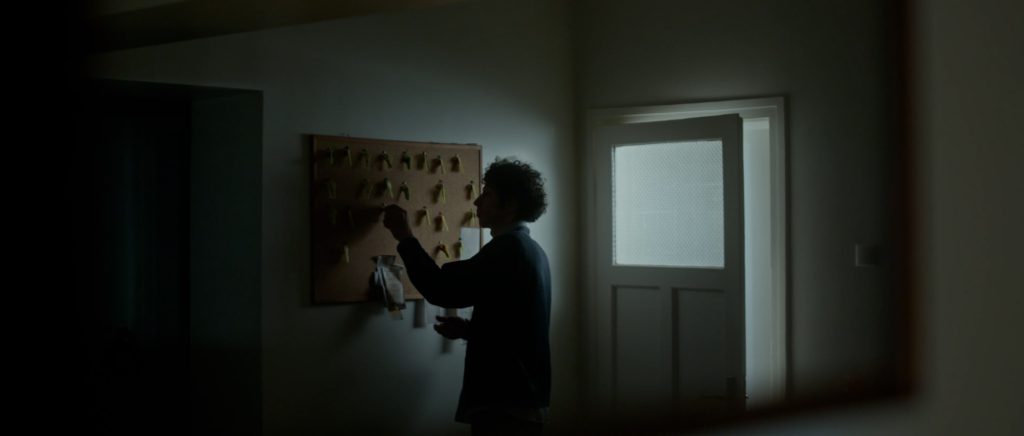
What first sparked the idea to make it?
I forgot my key one night and couldn’t get into the house. I asked our janitor to help me open my door with a credit card, an old method I know he can do. I realised when I entered the house that our janitor could secretly get into my house when I was not at home if he wanted to. Afterward, the curiosity that appeared in my head, what would he do in my house if he entered? Then, I started to write a protagonist with my friends, and TENEMENT’S script was made.
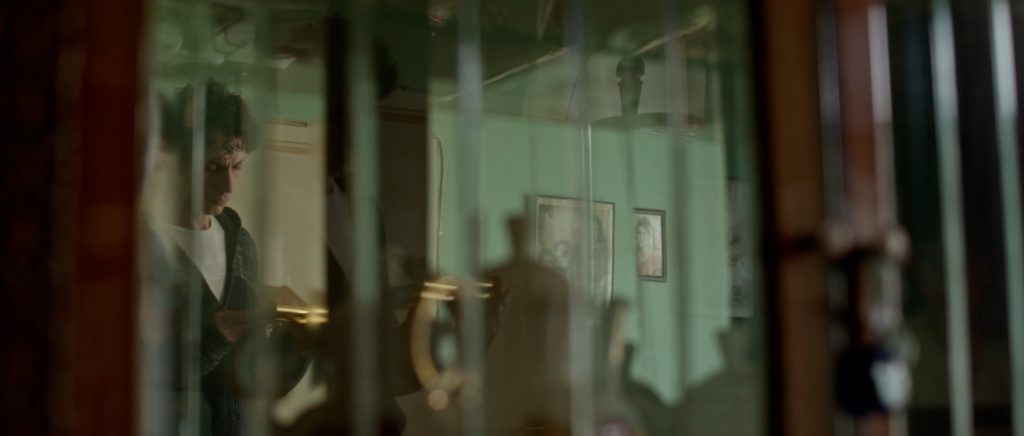
Tell us a bit about your film and the filmmaking process – what did it take to make your film?
We had many disadvantages, like being students or the whole team voluntarily making sacrifices to work on this project. Everyone needed to put in much effort and remain professional even in the most problematic and tense moments. Thanks to the dedication and passion of the team, we have succeeded in a job we can be proud of by turning all our disadvantages into advantages.
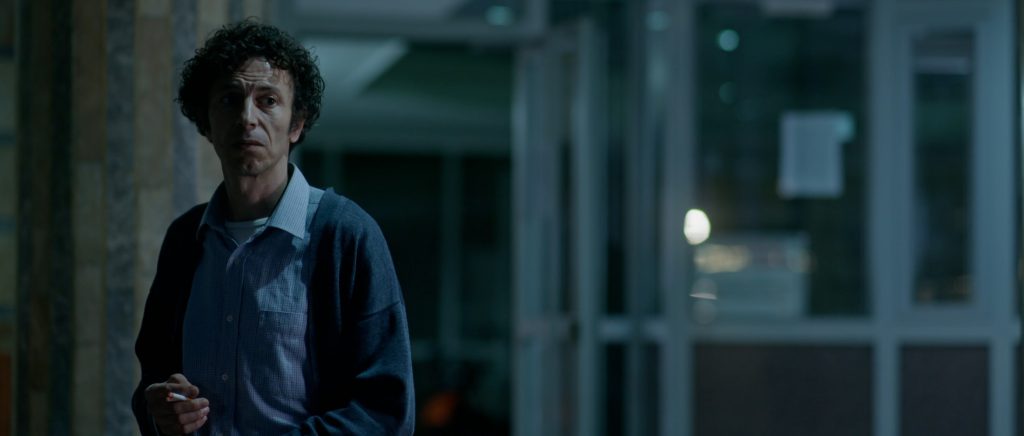
Tell us about the sound choices in your film
As every detail of the film, we tried to put a realistic approach to the sound. For this reason, we have given great importance to using diegetic sounds in the field recording and during sound design during the post-production phase.
Also, we had highly problematic shooting locations, like inside of an apartment and on the street. For example, it was not easy yet, so recording the right amount of echo was crucial to have a realistic sense of the dialogue inside the apartment.
Moreover, we worked with Arın Aykut, a media composer in London, to compose the film’s score. We decided he would write a score that would reflect the character and the general atmosphere of the film with a leitmotif technique. Arın composed a powerful and harmonious score despite having minimal time.
Additionally, there was a scene where I wanted to use a traditional Turkish music song as narrative music. I contacted the copyright owner of the work I plan to use but could not mutually agree on the price.
I had minimal time to finish the editing, and I was in a big quandary. Then we talked with Arın, and he devised a clever solution. I went to a “meyhane,” a Turkish tavern, and asked the musicians to improvise a melody that captured a similar feeling from the same era as the original song, which works.
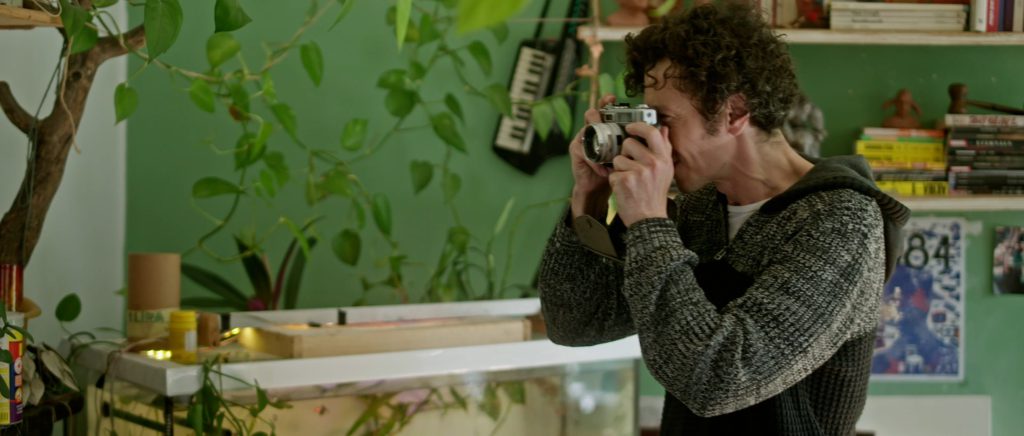
Tell us about the visual choices in your film. What were your main goals and techniques in creating the visual style of your film?
Ege Demirağ (Cinematographer) and I have always focused on a technique that is alone with the character and strongly reflects the protagonist’s feelings with our camera movements and lens choices in our compositions.
Throughout the film, we aimed to increase the intensity of emotion in the scenes, taking care to put the audience in a position of secretly observing.
You can also see many reflection shots in the film. With these reflections, we present an allegorical approach to the protagonist living different lives and having a double life with the supporting character.
Regarding production design, we started to discuss with Koray (Production Designer) how to strengthen our philosophical expression from the moment the script is finished. The art team worked hard to keep a realistic expression and to build intense compositions from colour to objects allegorically concerning the protagonist.
When we look at the result, we can see how strongly the production design and locations contribute to the narrative. This movie sometimes has crowded visuals and sometimes very simple but effective visuals.
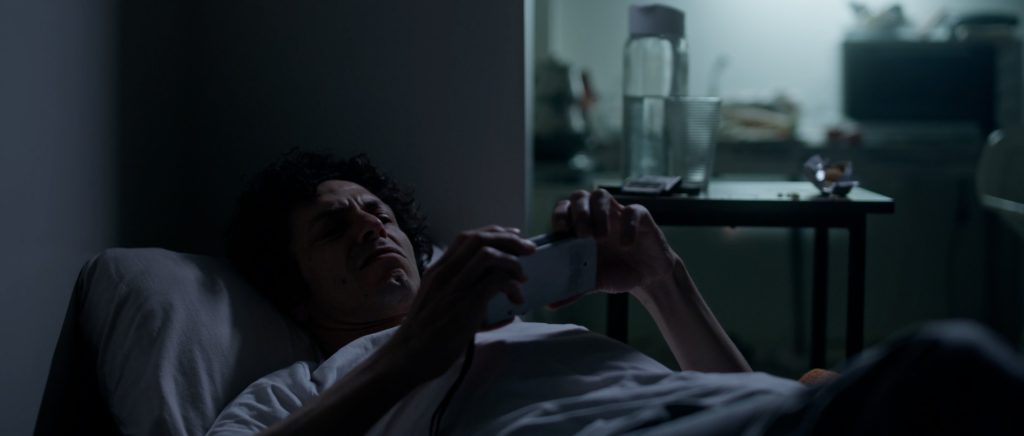
Can you share the most important lessons you learned through the process of making the film?
Film production is like climbing a mountain. There are lots of ups and downs in the journey. Initially, everyone is so concentrated and excited to make a good one. Then everyone gets down. As a director and producer, or everyone above the line, it is crucial to motivate the crew in those ups and downs.
If you could go back in time to pre-production and give yourself one piece of advice, what would it be?
Better arranging off days! Everything will be more complicated than it seems because we are not working with a production company due to our lack of experience. In addition, it will be a challenging process as our shooting locations will be very dependent on external factors. Having off on the suitable days keeps the energy up for the whole crew.
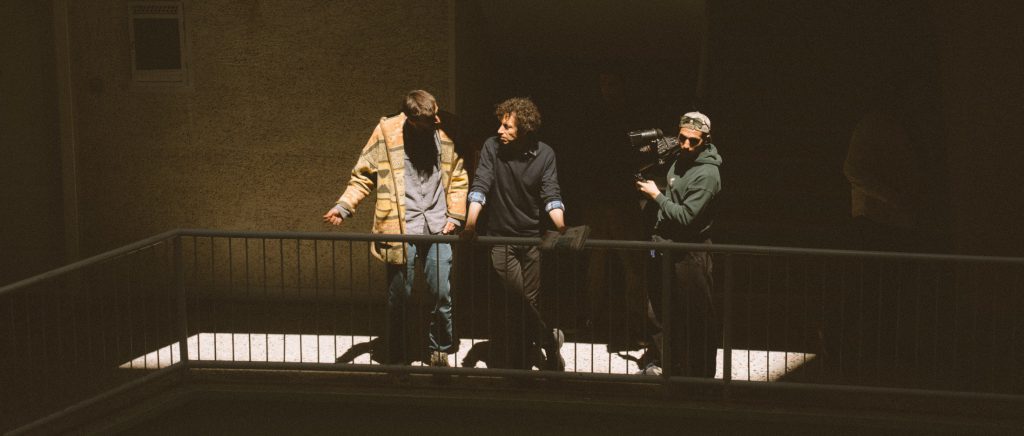
What do you wish you’d known before you began the distribution process?
If you are trying to distribute your film, you must constantly monitor the submission dates of film festivals and do research every day. I think starting this process a month earlier than we started would be much better.
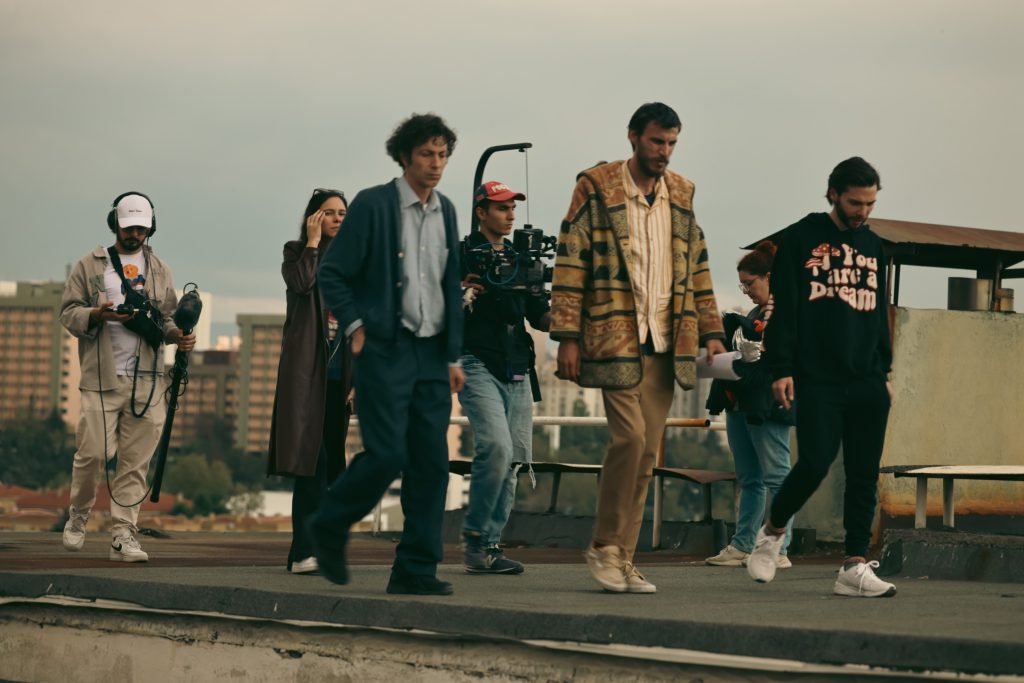
If you were to have infinite resources – walk us through your fantasy film project
I don’t believe infinite resources create better films. I would prefer to have only what I need specifically for that film project and use it wisely.
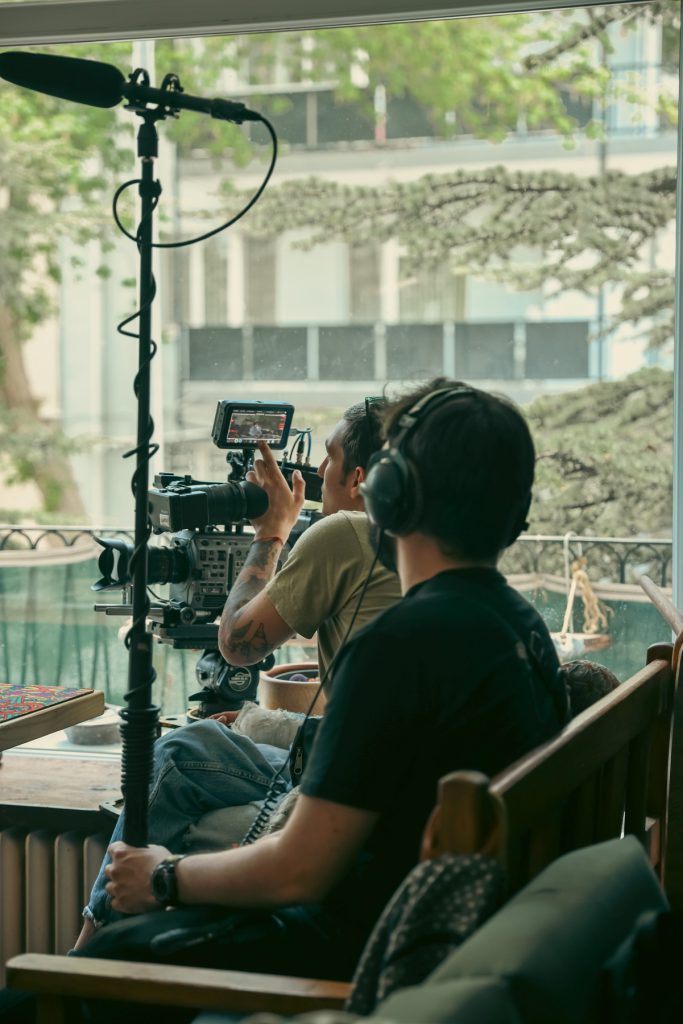
If you are a film industry professional and would like access to the catalogue and more, find out here how to sign up.
Filmmaker? Upload your short film to T-Port or sign up for our newsletter to get regular updates on the current trends and exciting innovations in the short film universe.
Back to T-Port Blog